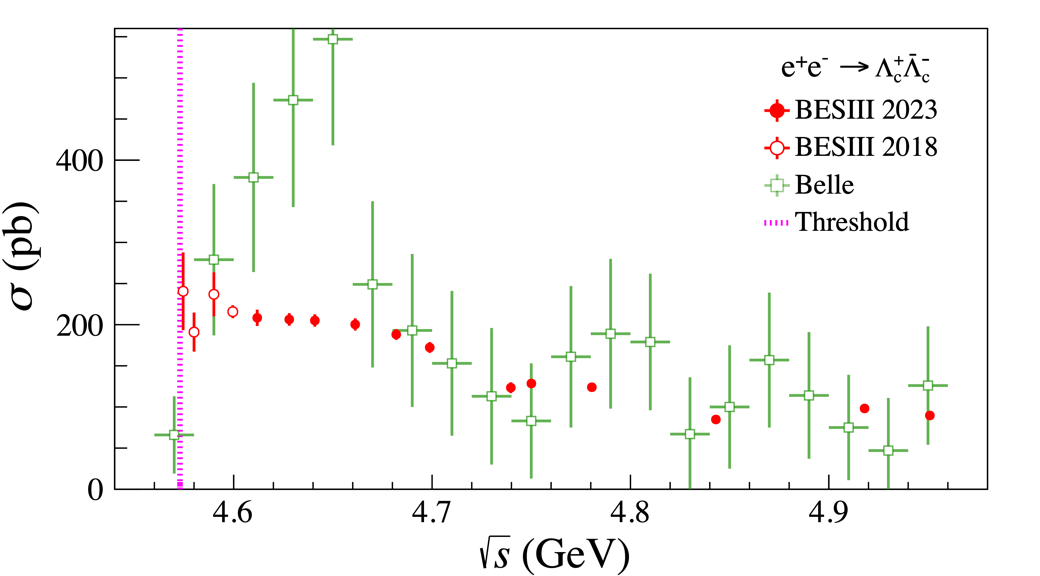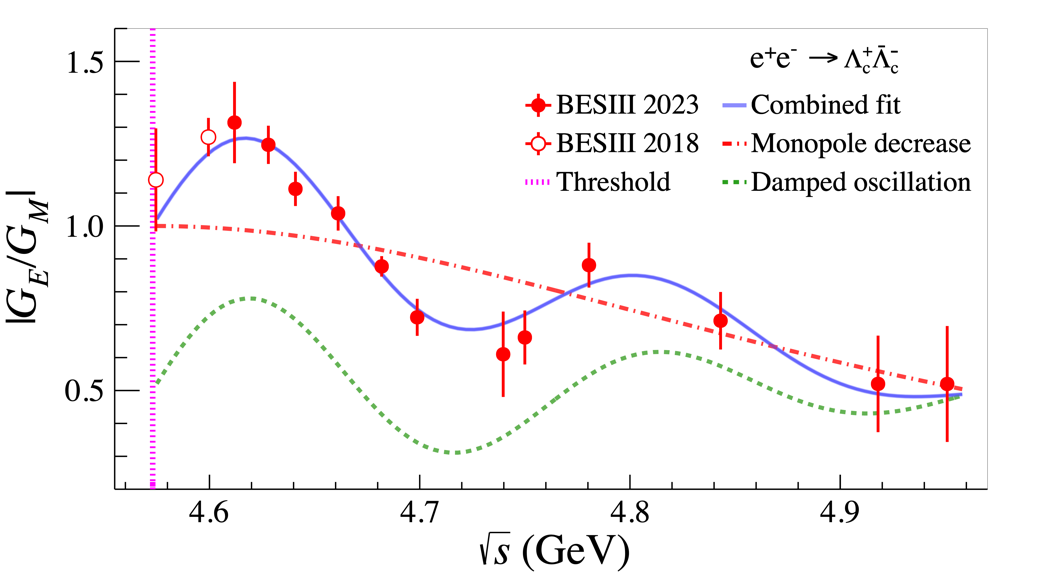BESIII Collaboration has measured the production mechanism of the charmed baryon, Λc+, in electron-positron annihilation with unprecedented precision, published online on Nov. 9, 2023 by Physics Review Letters [Phys. Rev. Lett. 131, 191901 (2023)].
In the production of the proton in the annihilation of electron and positron, the non-zero cross section near production threshold is observed. In addition, a striking oscillation feature in the effective form factor spectrum and the electromagnetic form factor ratio spectrum is discerned. These non-trivial features triggered various theoretical discussions concerning the structure of baryon. As the charm analogue of proton, Λc+ is the lightest baryon containing a charm quark. Extensive investigation of the Λc+ production mechanism will not only contribute to the interpretation of above non-trivial features but also the exploration of the charmonium state Y(4630). This state is supposed to decay into the final state Λc+Λc- with a relatively large fraction thereby should show up in the cross-section spectrum.
In this measurement, a total of 16 data points above the production threshold of Λc+ are used. Taking the advantage of the large statistics of the data samples, a double-tag method is applied in addition to the single-tag approach, with which the systematic uncertainties of the production cross section are reduced significantly. Following figure illustrates the comparison of the cross sections measured by this work (red dots) and Belle, where no enhancement around the 4.65 GeV is observed. This means the charmonium state Y(4630) is unlikely to decay to Λc+Λc-.
In addition, in contrast to the case for the proton, no oscillatory behavior is discerned in the effective form factor spectrum of Λc+. However, electromagnetic form factor ratio spectrum of Λc+ reveals an oscillation feature, as shown in the following figure:
Our data will serve as important inputs for theoretical models concerning the internal structure and production mechanism of baryons.



